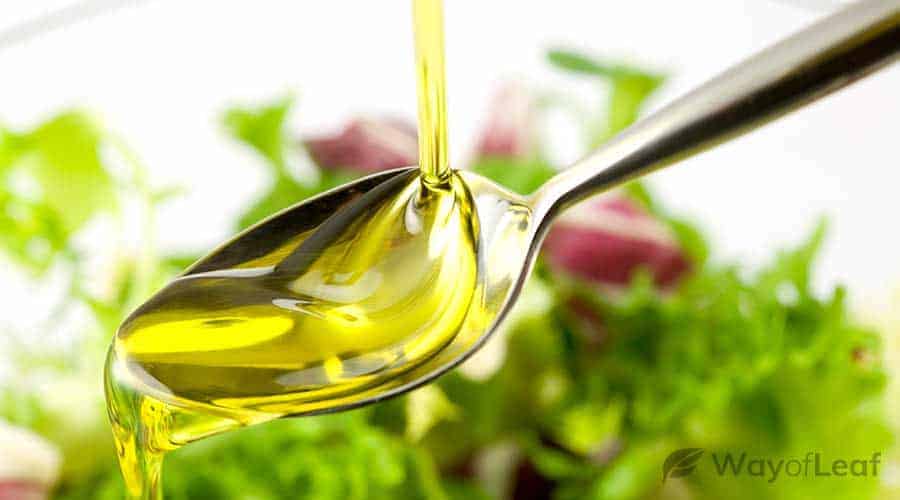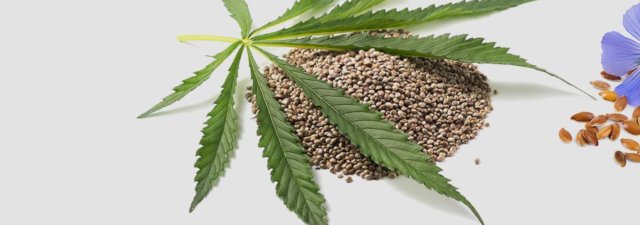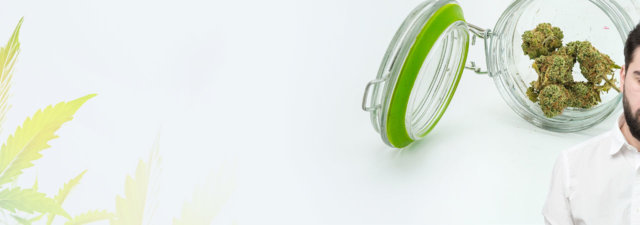Homemade edibles are more popular than ever. The benefits are plentiful: delicious taste, potent high, a sense of achievement – the list goes on. There’s just one problem: there’s no convenient label to tell you how much THC is in each bite when cooking at home.
Edibles can be fun, but if you eat potent weed brownies without knowing the THC content, you could find yourself greening out. Vomiting and feeling miserable will likely ruin your entire experience, so it’s best to avoid this scenario where possible.
Luckily, there’s an easy way to work out how much THC is in the edibles you have made. You can use this formula for sweet treats and even full cannabis meals. Let’s see how to do it.
Step 1: Find the Percentage of Your Weed
Firstly, it’s imperative to know what weed you’re using and how potent it is. The THC content varies from sample to sample. As a result, you can never really know how much THC is in the cannabis you possess unless you have some expensive lab equipment.
According to a 2009 study by the US government, the average THC content of cannabis was 10%. However, a 2016 study by ElSohly et al. revealed that potency has been rising since 1995, and in 2014, it was approximately 12%.
Marijuana potency is rising, and unless you have expensive lab equipment, there’s no way of knowing your weed’s precise THC content.
If you want to get more specific percentages, you can find information using the name of your strain. Give it a quick Google search, and you will likely find information about the average THC content of the specific strain. Here at WayofLeaf, we have plenty of up-to-date reviews on cannabis strains that feature an average THC content, so you know what to expect.
Please note that your raw cannabis contains THCA; the ‘A’ stands for acid. You need to decarboxylate the weed to benefit from THC. Otherwise, you won’t experience the intoxicating high associated with marijuana. We will look into decarbing a little later.
Step 2: Calculate the Strength of Cannabutter
When cooking with cannabis, you will typically need cannabutter, canna-oil, or cannamilk. First, you need to work out the strength of the cannabutter. Fortunately, the math for doing so is pretty simple.
The formula for calculating the THCA level of your cannabis is as follows:
Percentage strength of the weed x 10 = number of mg per gram
Number of mg per gram x number of grams in the recipe = THC content of the cannabutter
For example, let’s say you have a cannabis strain with 10% THCA. You have decided to make one cup of cannabutter using an ounce (28 grams) of weed. The math would go something like this:
10% x 10 = 100mg of THC per gram
100mg x 28 grams = 2800mg
So, in one cup of cannabutter, you’ve got 2800mg of THCA. That’s a lot, though, so you may need less cannabis than this.
Step 3: Calculate How Much Is in Your Edible
It’s unlikely that you would use an entire cup of cannabis butter in an edible recipe. Most recipes call for 1-2 tablespoons. For reference, one cup of butter is approximately 227 grams, while one tablespoon is roughly 14 grams. Thus, there are about 16 tablespoons of butter in one cup.

Let’s say your recipe contains just one tablespoon of cannabutter. To work out how much THCA is included in that (using marijuana with 10% THCA), do the following:
[Number of mg per cup ÷ 16 (number of tbsp per cup)] x number of tbsp in the recipe]
It would look something like this:
- 2800mg ÷ 16 = 175mg per tablespoon
- 175 x 1 = 175mg in the recipe
If you’re making a whole meal, you can go ahead and assume that you’ll be eating 175mg of THCA in total. If you’re making a traybake or gummies that you can cut into smaller portions, you can divide the mg total by the number of edibles you’re cooking.
For example, if you’re making a tray of brownies cut into twelve slices, divide 175mg by twelve. The result is 14.58mg. Thus, there is 14.58mg of THCA per slice.
Don’t Forget About Decarboxylation!
Better known as ‘decarbing,’ decarboxylation relates to the chemical reaction that removes a COOH group from THCA. When you apply heat to marijuana, you convert its cannabinoids into active molecular forms that have an impact. The process of vaping or smoking weed decarb it, but you need to heat it before adding it to your cannabutter mixture.
The conversion rate of THCA to THC is 0.877, which means your marijuana loses 11.3% of its original THCA content during the decarbing process. However, you could lose more via an inefficient process.
Using our 175mg tray of brownies as an example, the math looks something like this:
175 x 0.877 = 153.48
153.48 / 12 = 12.79mg
Therefore, there is 12.79mg of THC in each slice instead of 14.58mg.
When decarbing, place the marijuana flower in an oven for 30-40 minutes at around 220-240 degrees Fahrenheit. Now it’s ready for inclusion in your latest batch of cannabutter.
More Math!
Unfortunately, we haven’t finished yet, although we’re getting close. We also have to account for lipid extraction efficiency because you won’t retain 100% of the THC in the cannabutter. Estimates vary, but your mixture may only retain between 30% and 60% of the THC. For the record, coconut oil and butter seem to hold the highest percentage of cannabinoids.
Once again, we will exercise caution and calculate based on 60% of the THC remaining in our brownie batch.
154 x 0.6 = 92.4
92.4 / 12 = 7.7
Suddenly, each slice has just 7.7mg of THC!
How Much Should You Eat Once You Calculate THC Percentage?
This is very much a ‘how long is a piece of string?’ type question. THC impacts everyone differently due to factors such as metabolism, body weight, and genetics. In general, a 2.5mg dose of THC is considered ample for first-time users. Individuals seeking stronger symptom relief or help with insomnia, for example, might go as high as 15mg. Going past this level for most users will probably impair coordination and alter perception.
It is also worth noting that cannabis edibles offer a significantly more potent effect than smoked weed. When you smoke marijuana, its cannabinoids, including THC, are absorbed into the bloodstream in minutes and travel to the brain. The result is a relatively rapid intoxicating high that also dissipates fairly quickly.
When you eat marijuana, the liver processes it and produces 11-Hydroxy metabolite (11-OH-THC), which is several times more intoxicating than THC. This is why many people are surprised by how hard-hitting edibles are! Ultimately, while it takes up to two hours to feel the effects, the high could last up to eight hours!
What Happens If I Eat Too Much?
Although you can’t technically overdose on edibles, you could accidentally consume far too much THC and experience extreme paranoia, hallucinations, and confusion. Apart from causing a great deal of fear, these symptoms could place you in harm’s way.
Therefore, it is best to consume a very small amount at first to see how it affects you. Do NOT eat any more on the same day, even if you feel no effects. Try again with a slightly higher dose on another occasion. Using our 7.7mg cannabis brownie as an example, stick with just one-quarter if it’s your first time eating an edible.
If you’re wary of the general level of intoxication offered by marijuana, you could purchase delta 8 THC edibles instead. D8 is about half as potent as the delta 9 THC you find in cannabis, so it may prove a worthwhile option if you have a low THC tolerance.
Things to Consider
Even if you have painstakingly calculated your edibles dosage down to every last bite, there is no way to know for certain how edibles will affect you. This is especially the case when trying a new strain. Every strain has varying THC contents, too, and you could get a weak sample one week and a potent one the next.
To ensure you have a good experience every time, no matter the THC content, there are some things to bear in mind.
- Environment: Using weed in a place where you are comfortable is always best. If you’re new to marijuana, it’s crucial. The environment also includes the people you are with, so make sure you gather some good friends. If you have your best buds (along with the best bud) around, you’re likely to have a good time no matter what.
- Tolerance: THC affects everybody differently, and what gets one person stoned might barely affect someone else. Your tolerance can also increase the more you use marijuana, so experienced users might need more THC to feel the same effects. This is something to consider when making a batch of cannabutter.
- Weight: Similarly, your weight and metabolism can affect your experience. Depending on how fast your body can process the cannabinoids, the edibles might take a while to sink in, and they may not be as potent. In this case, you might need to up the dose.
- State of Mind: If you’re feeling bad, weed might not be the best option. For some people, using THC while in a negative mind frame can cause anxiety and paranoia. It’s a little similar to the environment but has more to do with your internal being. If you feel positive and balanced, you’re more likely to have a pleasant experience.
All of these things can influence your experience. Alongside calculating the dosage of edibles, you must consider factors like this to have the best time possible.
More Tips When Making THC Edibles at Home
Let’s conclude by providing a few more tips on making cannabis edibles:
- Invest in a premium quality coconut oil or butter
- When grinding the weed, avoid overdoing it; extra-fine plant matter is hard to strain
- Take care to mix the batch evenly to ensure the THC is properly dispersed
- Resist the urge to add a significant amount of marijuana; apart from making the mixture too potent, you’ll waste your weed since lipids in oils only bind with so many cannabinoids
- Decarb your cannabis first, but make sure the oven’s temperature isn’t so hot as to break down the cannabinoids
- Cut vertical slices when dividing your edibles; cannabinoids will sink and spread unevenly throughout the cannabutter, so scooping from the top is unwise
- Use the best measuring equipment you can afford to get an accurate THC content reading
- Test your cannabutter’s potency before including it in a dish. For instance, eat some of the butter and see how you feel after a couple of hours
Final Thoughts on Calculating the THC Content of Your Edibles
Whether you desire incredibly potent space cakes or a gentle edible that will calm your nerves a little, you can make an edible that’s perfect for you. One of the best things about cooking edibles yourself is deciding how much cannabis goes in. Using the formula in this guide, you can calculate how much marijuana to add to your cannabutter and include it in the recipe.
That being said, it might take a little trial and error. You may find that each batch is different, so be prepared to be flexible and take what comes!
Remember that edibles can take a few hours to kick in. If you don’t feel the effects immediately, sit tight, and give it a while. There’s no sense doing all that calculating to eat too much and feel sick anyway!
Hopefully, this guide has helped you understand how to calculate the THC in homemade edibles. With this knowledge, you’re ready to be a cannabis chef. Happy cooking!











